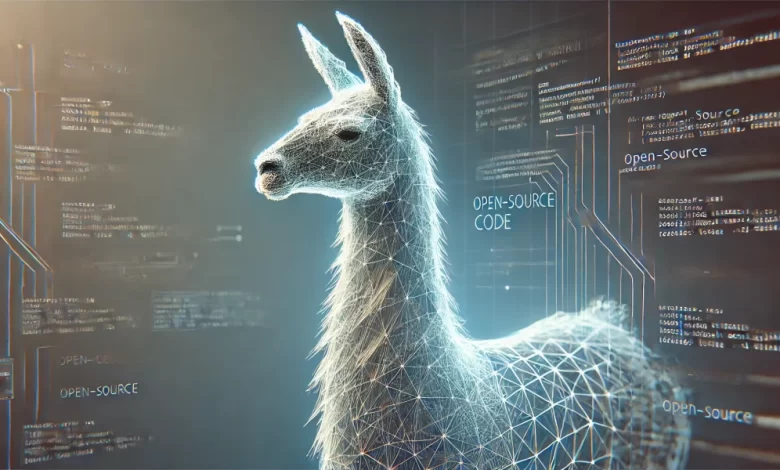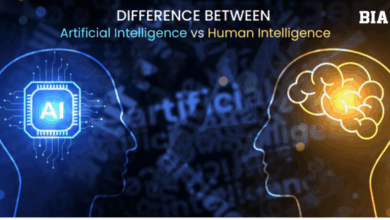Llama 3.1: Meta’s Most Advanced Open-Source AI Model – Everything You Need to Know

Meta revealed Lama 3.1, the latest and most advanced large language model, which represents a significant leap forward in AI capabilities and accessibility. This new release continues Meta’s commitment to making AI openly accessible, as highlighted by Mark Zuckerberg, who believes open-source AI is beneficial for developers, Meta and society as a whole.
To introduce Llama 3.1, Mark Zuckerberg wrote a detailed blog post titled “Open Source AI is the way forward”, in which he outlines his vision for the future of AI. He draws a parallel between the evolution from Unix to Linux and the current trajectory of AI, highlighting that open-source AI will ultimately lead the industry. Zuckerberg highlights the benefits of open-source AI, including customization, cost-efficiency, data security and preventing supplier lock-in.
He believes that open source development promotes innovation, creates a robust ecosystem and ensures fair access to AI technology. Zuckerberg also addresses security concerns and argues that open-source AI, through transparency and community research, can be more secure than closed models like OpenAI’s GPT models.
Meta’s commitment to open-source AI aims to build the best experiences and services, free from the limitations of closed ecosystems. He concludes by inviting developers and organizations to help build a future where AI benefits everyone and promotes collaboration and continuous progress.
Key learning points
- Commitment to open accessibility: Meta continues its commitment to open-source AI, with the aim of democratizing access and innovation.
- Improved capabilities: Llama 3.1 features an extension of the context length to 128 KB, supports eight languages, and introduces Llama 3.1 405B, the first open-source frontier AI model.
- Unparalleled flexibility and control: Llama 3.1 405B provides state-of-the-art capabilities comparable to leading closed-source models, enabling new workflows such as synthetic data generation and model distillation.
- Extensive ecosystem support: With more than 25 partners, including major tech companies like AWS, NVIDIA and Google Cloud, Llama 3.1 is ready for immediate use across platforms.
Lama 3.1 Overview
State-of-the-art capabilities
Llama 3.1 405B is designed to rival the best AI models available today. It excels in general knowledge, controllability, mathematics, tool use and multilingual translation. This model is expected to drive innovation in areas such as synthetic data generation and model distillation, providing unprecedented opportunities for growth and exploration.
Improved models
The release includes enhanced versions of the 8B and 70B models, which now support multiple languages and have extended context lengths up to 128K. These improvements enable advanced applications such as long text summarization, multilingual conversation agents, and coding assistants.
Open source availability
True to its open source philosophy, Meta makes these models available for download Meta And Hugging face. Developers can use these models for a variety of applications, including enhancing other models, and can run them in a variety of environments, from on-premises to cloud and on-premises deployments.
Model evaluations and architecture
Extensive evaluations
Llama 3.1 was extensively tested on more than 150 benchmark datasets in multiple languages and compared to leading models such as GPT-4 and Claude 3.5 Sonnet. The results show that Llama 3.1 is competitive in a wide range of tasks, cementing its place among the best AI models.
Advanced training techniques
Training the 405B model involved processing over 15 trillion tokens using over 16,000 H100 GPUs. Meta has adopted a standard decoder-only transformer model with iterative post-training procedures, including controlled fine-tuning and direct preference optimization, to achieve high-quality synthetic data and superior performance.
Efficient inference
To support large-scale production inference, Llama 3.1 models were quantized from 16-bit to 8-bit numeric values, reducing computational requirements and allowing the model to run efficiently on a single server node.
Instruction and chat refinement
Meta focused on improving the model’s ability to follow detailed instructions and maintain a high level of safety. This included several rounds of tuning on top of the pre-trained model, using synthetic data generation and rigorous data processing techniques to ensure high-quality output for all capabilities.
The lama system
Llama 3.1 is part of a broader system designed to work with various components, including external tools. Meta aims to give developers the flexibility to create custom applications and behavior. The edition includes Llama guard 3 and Prompt Guard for enhanced security and safety.
Lama Stack API
Meta is releasing a request for comments on the Llama Stack API, a standard interface to facilitate the use of llama models by third-party projects. This initiative aims to streamline interoperability and lower barriers for developers and platform providers.
Building with Lama 3.1 405B
Llama 3.1 405B offers extensive capabilities for developers, including real-time and batch inference, supervised fine-tuning, model evaluation, continuous pre-training, retrieval augmented generation (RAG), function calls, and synthetic data generation. From day one, developers can start building these advanced features, supported by partners like AWS, NVIDIA, and Databricks.
Try Llama 3.1 today
Llama 3.1 models are available for download and immediate development. Meta encourages the community to explore the potential of these models and contribute to the growing ecosystem. With robust security measures and open source access, Llama 3.1 will drive the next wave of AI innovation.
Conclusion
Llama 3.1 represents a major milestone in the evolution of open-source AI, offering unparalleled capabilities and flexibility. Meta’s commitment to open accessibility ensures more people can benefit from advances in AI, fueling innovation and equitable use of technology. With Llama 3.1, the possibilities for new applications and research are enormous, and Meta looks forward to the groundbreaking developments the community will achieve with this powerful tool.
Readers who want to know more should read Mark Zuckerberg’s detailed blog post.






